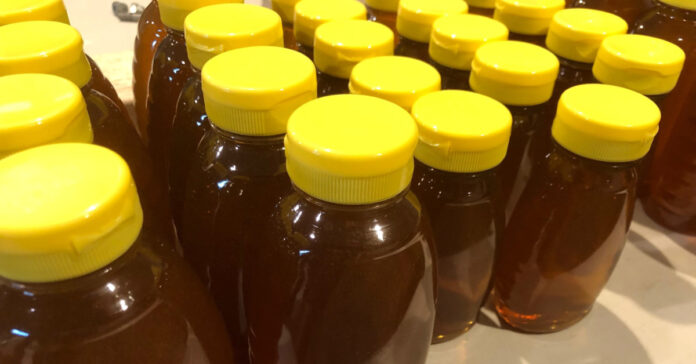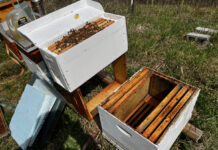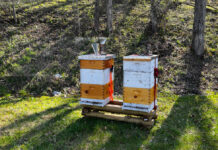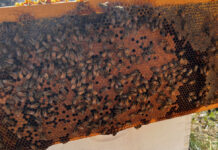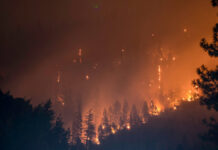On Saturday, I opened up the supers on our hives and pulled off 14 frames of capped honey from the two hives that successfully made it through the winter. There were many other frames that were filled with honey but were only half-capped, and still others that were full of nectar that had not yet been converted to honey. We should have a much larger harvest in another couple of weeks.
My daughter came up to help with the processing, which netted 36 pounds of honey. We used up all 14 of our 8-ounce honey bottle and then the remainder went in one-pound bottles. While I prefer the plastic bottles with the flip-open lid so you can squeeze out the honey, I did put some in glass jars as well. The 8-ounce bottles will be used as gifts and samples while most of the one-pound bottles will go on sale for $12 to $15 each. Of course, my daughter absconded with a few pounds, and we’ll save some for our table and our food storage program.
This is a classic honey with a medium amber hue and a robust taste with a little a zing to it. It is darker, and the flavor is less citrusy than last summer’s harvest. I suspect the darker tone and the flavor profile are due to nectar from the tulip poplar. When you taste it, you think, “Yeah, that’s how honey should taste.”
An Early Harvest
Last year, I installed my nucs the first week of June and harvested my first honey in August. This year, I’m pulling off my first honey in mid-June. That’s a tremendous difference, entirely attributable to having two hives successfully overwinter. I expect I will make at least two more harvests this summer, possibly three. I hope they will grow progressively larger.
I have already returned the empty frames to the hives, checker boarding them between the new plastic frames I (finally) received from Mann Lake so the bees will draw more comb. In addition to replacing the super I pulled, I added a second super to one of this year’s nucs. Both my nucs should provide honey at my next harvest.
I’m walking a tightrope trying to balance available supplies with giving the bees sufficient room to produce honey while encouraging them to draw comb.
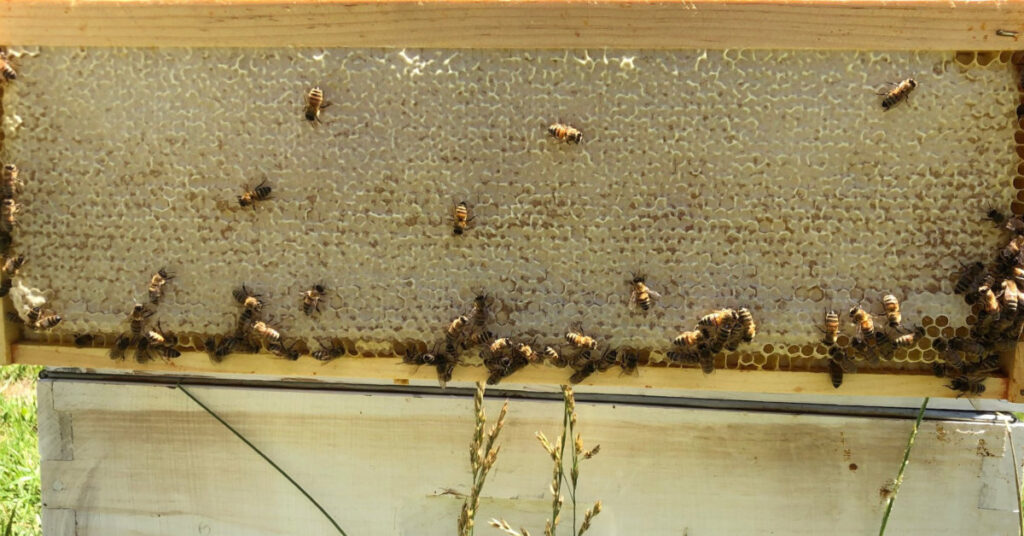
Survival Sweeteners
Honey is a dense source of calories that can store forever. These make it an ideal sweetener for preppers.
If a major global disaster were to destroys large chunk of the world, getting sweeteners is going to be difficult for the survivors. To make sugar from sugar cane requires large rollers to press the juice from the cane and large flat pans to gradually boil the juice down to a point where it will crystallize into raw sugar. Someone in a warm climate with access to sugar cane might start up a business to produce it using techniques that go back hundreds of year, but if transportation is significantly disrupted, sugar will be scarce in much of the country post-SHTF.
This will create demand for different local sweeteners, which could include honey, maple syrup, maple sugar, and molasses made from sugar cane or sorghum. Honey, in my opinion, is one of the best survival sweeteners. Not only is it higher in calories than the alternatives, it can store forever. A knowledgeable beekeeper can produce honey in any state, despite their weather differences. Also, honey has value during good times or bad, and can be sold or used for barter.
While honey might crystallize in storage, just place your jar in a pan of warm water to return the honey returned to its liquid state. How quickly your honey crystallizes will depend on what flowers the bees visited and what nectar was used to make the honey. Some honeys crystallize in months, while others can remain liquid for years.
Honey makes an excellent topping for bread and biscuits, with or without butter. It can be used to sweeten your drinks, as a replacement for sugar in recipes, and to make mead. Brewers can also utilize honey in brewing beer, but I prefer to eat my honey rather than drink it.
High Intensity Calories
When discussing survival gardening on June 10, I posted that a pound of yellow squash has 100 calories. Contrast that with a pound of honey, which has 1,382 calories. That means I just harvested 49,752 calories worth of honey, which is probably more than all the green leafy vegetables in our garden will yield. (Granted, it’s not a huge garden.) More importantly, I was able to harvest honey sooner than I was able to harvest anything but spring greens from my garden.
Can you live on honey alone? No. While honey can provide valuable calories if you are underfed, it’s not recommended as a sole source. You should not try to live on honey alone or on milk and honey. While raw honey contains natural enzymes, antioxidants, and select micronutrients, your body also needs other macronutrients, like protein and fats, and many micronutrients. This is why we recommend a well-rounded, multi-layered food storage program bolstered by foods you raise or harvest.
If you were bugging out or going on a patrol, having a bottle or two of honey in your bag would provide some fast, natural energy when you need it. Honey is also an ingredient in many home remedies for various ailments. While many of these do not have scientific backing, studies have shown that honey has antimicrobial products when used to treat wounds.
Don’t Wait Too Long
It took our bees close to 90 days to produce their first decent honey harvest and a full year to generate a substantial harvest. It took our chickens 135 days to produce their first eggs. Most of the vegetables in our garden take at least 75 days to mature, with others taking 90 days or more.
If you think you’re going to start producing food when the SHTF or the shelves run dry, you better have your production efforts well underway. Producing your own food is neither cheap nor easy, and it certainly won’t happen overnight.

